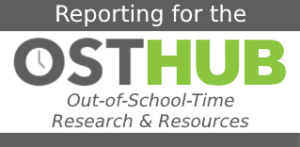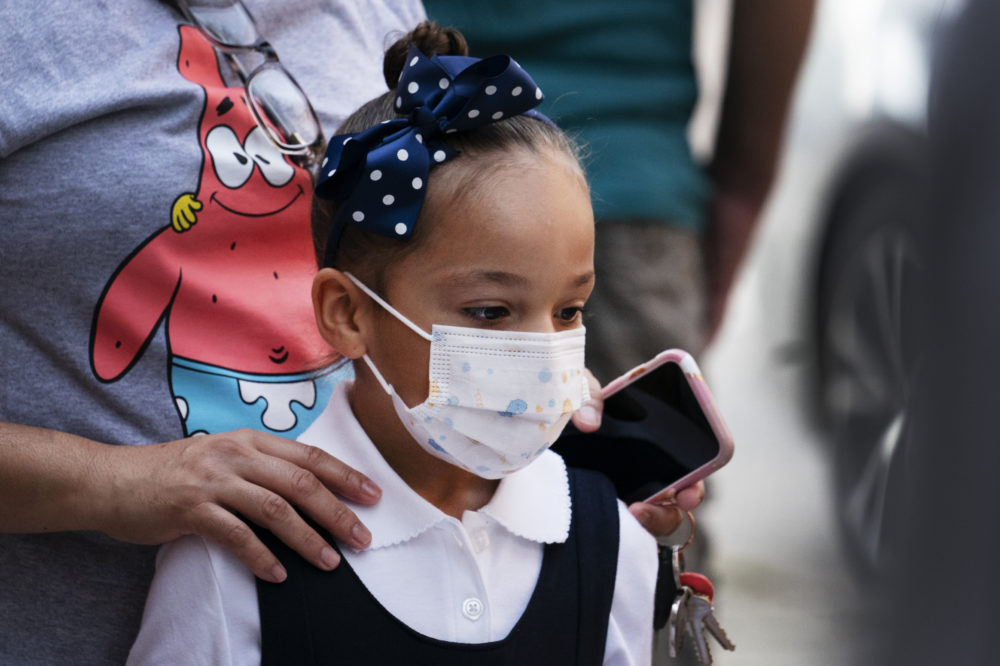It was the first week back to school, and the staff at CollegeCommunityCareer, an afterschool program in the Houston area, were eager to finally meet face-to-face with students after a year and a half.
CollegeCommunityCareer had conducted virtual afterschool and summer classes aimed at helping students apply to college throughout the pandemic, ever since public schools in Texas shifted to online learning. Then, as the spring and early summer rolled around, Covid-19 cases dropped to their lowest levels yet, and educators nationwide anticipated the new school year would be back to normal.
But hours before CollegeCommunityCareer was due on the high school campus, they got an email from the school saying it was shut down to outside groups due to an alarming uptick in Covid-19 cases among children in Texas.
 For Kathy Rose, the executive director at CollegeCommunityCenter, the news was discouraging for staff and disruptive for the kids.
For Kathy Rose, the executive director at CollegeCommunityCenter, the news was discouraging for staff and disruptive for the kids.
“It’s unsettling for students, because now what do they do?” she said. “They had planned, maybe, their work schedule around coming to our afterschool program, and now we aren’t coming. It’s a little frustrating.”
After a year of remote learning, experts worry students have fallen behind academically and are struggling socially and emotionally, having been isolated at home for so long. Afterschool programming is slated to play a huge role in the pandemic recovery to help get students back on track. The American Rescue Plan earmarked roughly $122 billion for K-12 education, with upwards of $30 billion potentially set to flow into afterschool and summer programs.
According to a survey by the Afterschool Alliance, more than 80% of programs across the country anticipated offering in-person out-of-school classes.
But in the days leading up to the fall school year, a dramatic increase in cases among children fueled by the delta variant prompted 1,000 schools around the country to close down. The rise was especially steep in states like Texas, Mississippi and Florida that sought to ban mask mandates in schools.
“Everybody thought they were on the trajectory to open up,” said Lisa Thompson Caruthers, director of the Center for Afterschool, Summer and Enrichment for Harris County Department of Education, which oversees 25 independent school districts and charter schools.
“Everything was so optimistic,” she added, “and then things started to change.”
During that first month of school, Texas had the biggest increase in cases among students in the pandemic, with 27,353 new positive Covid-19 cases in a single week. One district closed at the end of August after two middle school teachers died from Covid-19 complications.
The Covid-19 spike threw a wrench into countless afterschool programs that had planned for in-person learning, forcing them to postpone or implement a virtual or hybrid model. These difficulties were exacerbated by a nationwide shortage of staff. Afterschool programs were at the mercy of the schools’ policies, which changed daily, further straining their limited resources.
While most programs have risen to the occasion, Holly McPhail of Florida Afterschool Network, worries just “how much pivoting can we do.”
But for now, with the recent Covid-19 spikes and school closures nationwide, afterschool programs grapple to adjust with the ongoing volatility.
“One of the great things about afterschool programs is they’ve been very creative, but they are struggling to know how to adapt because it is changing day-to-day,” said Jodi Grant, executive director of the Afterschool Alliance. “What we’re hearing right now is very much anecdotal, but that there’s huge uncertainty.”
Holly McPhail, of the Florida Afterschool Network, said afterschool programs have acted as a safety net for kids during the pandemic by “picking up the slack for when our school districts are unable to accommodate care.”
With the spikes in cases, evolving rules and school closures, programs have had to develop a mindset of “pivot, pivot, pivot.” While most have risen to the occasion, McPhail worries just “how much pivoting can we do.”
On top of the uncertainty, many afterschool programs operate understaffed and have had to reduce the number of children attending.
“It’s been really difficult to find qualified, or people with the potential, to work in our program,” Lisa To, youth program manager of the Chinese Community Center in Houston, said. “That has been a big challenge for us this past year.”
To has been looking to hire five staff positions since July, but only 15 people have applied, several of whom weren’t vaccinated.
“In a normal year, we would have gotten 15 within the first two weeks,” she added.
She’s filled only two roles so far and has had to limit attendance to 20 students. The Chinese Community Center postponed fall programming until after Labor Day hoping it would provide a cushion for them to be better trained and prepared, and maybe even ride out the spike.
But when the Tuesday after Labor Day came, and the team went to the school for the first time to pick up their students, To said it went a bit sideways, and they struggled to do temperature checks as the students rushed into their van.
“Even though we started with so few students, it still felt chaotic,” she said. “It wasn’t that bad, but definitely showed us what areas we needed to work on.”
In normal times, the Chinese Community Center enrolls up to 80 students, but short-staffed and with Covid spiking, it has been forced to reduce the number of kids to 20, turning away many families that had been coming to them for years.
“It’s been hard to turn away families,” To said. “But we just don’t have the capacity to serve them right now.”
































